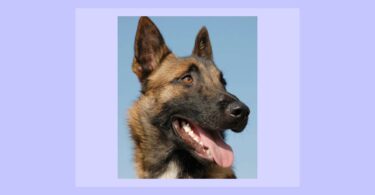Jan Scholten in his major books on the mineral remedies has given the field of human homeopathy a highly valuable tool for evaluating cases and selecting mineral based remedies. Sankaran has done similar schematic work with both minerals and plants. These tools are based on human society, its connections and most importantly its language. I have used their methods well in some human cases but have struggled to apply them quite so easily or safely in animal cases.
Just when I was about to reach the conclusion that this method was not easily applicable to animals, along came Breeze. She is a 5 year old Hanoverian mare, who had been weaned at six months, kept with another mare until eighteen months of age when she was turned away with her newly weaned sister onto the hillsides of North Yorkshire until she was four years of age. For two and a half years she had very little human contact and her only horse contact was her younger sister.
She was taken off the hillside at four years of age, broken and backed. She napped badly initially and would not leave the yard. This fight went on every day for over a month when she finally went over backwards, hospitalising her then owner and eventually being moved to a new yard with her new owner. On the new yard she was turned out with an eight year established herd and within three months she had taken over as the top mare.
She had an episode of colic with impaction during the initial two months on the new yard and became dangerous to ride or be around at the beginning of her seasons. She would rear, spin and dig her bed out frantically. She also had a dramatic growth spurt where she went from 15.2HH to 16.1HH in three months. She had wolf teeth removed in early August 2006 as they were causing considerable discomfort.
She was then moved to her current yard where she was turned out with a single younger mare with others across the fence. She became very possessive of the mare and would herd her away from the other horses and charge at the other horses double barrelling in the air; she would also attack people if they went to the other mare. They then tried to separate her from this mare and turned her out with two thoroughbreds, one of which was a dominant gelding. After charging at them with bared teeth on several occasions, the dominant gelding was found hiding behind the other mare. They then tried her with another group and she would run up and down the fence line near to the entrance to her stable. If she was left alone in the field she would jump out and had to have other horses turned out before her or she would not settle.
The owner cannot tie her up as she panics and pulls back if even slightly threatened. She frequently rears when lead in hand and was virtually impossible to load into a trailer and very difficult to work with in the indoor school. If she was reprimanded she sulked in the back of the stable and would not look at the owner for a long time. She showed considerable empathy if other horses were ill; the horse next to her in the stables had a serious colic one night during a very bad thunderstorm and the whole time he was ill Breeze refused to eat and rested her head on the partition between them.
She felt the cold and screamed to be let in if raining.
I was called in as this horse had been served an eviction notice from the yard and had been branded as a dangerous mare. However, the owner thankfully knew that this was not her true self.
The initial feeling she invoked in me was one of vulnerability. Having spent time letting her settle with me she was extremely soft and tactile during the examination and behaved impeccably throughout. I really liked this horse after spending time with her.
Case analysis
This case was one of the first cases where I felt it totally lent itself to using Scholten’s method as the tool of choice for perceiving the case. Without any anthropomorphising at all, this was clearly a young naive animal that was struggling with separation and identity issues.
She had a split between being gentle, caring, empathetic and tactile on the one side and volatile, anxious, and angry on the other. She would assert herself but then not know what to do with it, just as she was not capable of forming normal healthy relationships with other horses; she either over protected and became possessive towards them or attacked and rejected them. None of this was at all surprising, considering that this horse only had her younger sister as a companion during much of her formative period and had no input from older experienced horses or any humans about how to behave in and understand the world.
So taking these issues to Scholten’s Periodic Table I felt that relationship was paramount, therefore a salt was likely, and that her stuck point was with identity i.e. row3/Silica series. In terms of the main element or anion she could only be in Stage 1, 2, or 3 at most as she was only just testing the water and greatly lacked confidence, and with the cation she is clear that she is herself but has little exaggerated ego or complete contradiction so would sit between stages/column 13 to 15. When you add the level of anxiety that she can express with the split that she was showing, the main element has to be Magnesium, and in a similar fashion when evaluating the common cations that combine with Magnesium, Phosphorous clearly presents as the clearest contender.
As always confirmation of my choice was done through study of the Materia Medica and Mag phos was applicable on all levels.
Treatment
I gave her Mag phos 200C night, morning and night (30/08/2006) and the change in this mare was dramatic. ‘She seems a lot more settled and has been happy hacking out on her own. She also seems happy grazing on her own without waiting for the other horses to be turned out first. She voluntarily walked up the trailer ramp on her own. Her ASBO has been lifted!’
After four weeks the owner reported that Breeze had started napping in the school again. She gave a single dose of Mag phos 200C and Breeze has not needed any further doses to date.
Conclusion
Could this case have been repertorised? Yes of course it could, and I may well have got to the remedy using general and physical symptoms as well as the mental ones, but in this case one tool for perceiving the case was Scholten’s method and standard Kentian repertorisation served only to confirm the choice I had made easily through Scholten and Sankaran’s interpretation of the periodic table and the remedies within.
Magnesium
- Pacifism
- Aggression
- Fear of loss
- Pain
Phosphoricum
- Communication
- Sympathetic
- Friends, acquaintances, neighbours
- Homesickness
- Curiosity and travel
- Restlessness and fears
From J. Scholten, Homeopathy and Minerals
——————————————————-
Sue Armstrong qualified from Cambridge Veterinary School in 1984 and went into mixed practice in Oxford and then into partnership in a Leeds practice. She qualified in Veterinary Homeopathy in 1996 and has gone on to gain her RSHom status covering her work in human homeopathy this year. In 2003 she set up Balanced Being which began as a veterinary practice with homeopathy as its core philosophy and offering fully integrated medicine for small animals. Balanced Being is now a group that includes Integrated Veterinary Centre (IVC) Wetherby, Balanced Being Equine, Balanced Being Human and the Balanced Being Foundation dedicated to research and education. Sue is a partner of the Homeopathic Professionals Teaching Group (HPTG) and is the current Junior Vice President of the British Association of Homeopathic Veterinary Surgeons (BAHVS). Sue is an international lecturer in homeopathy.




